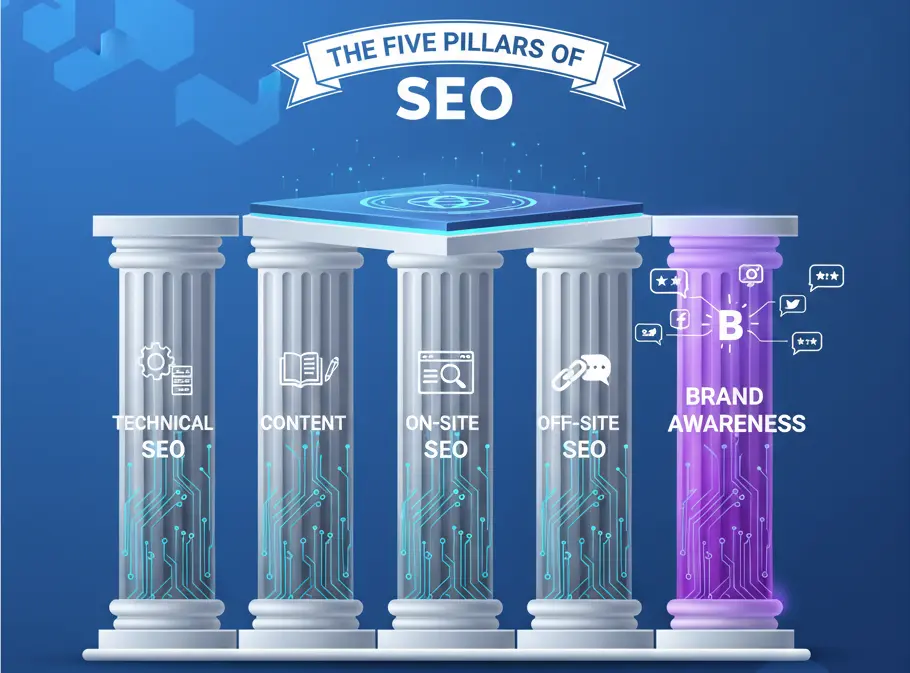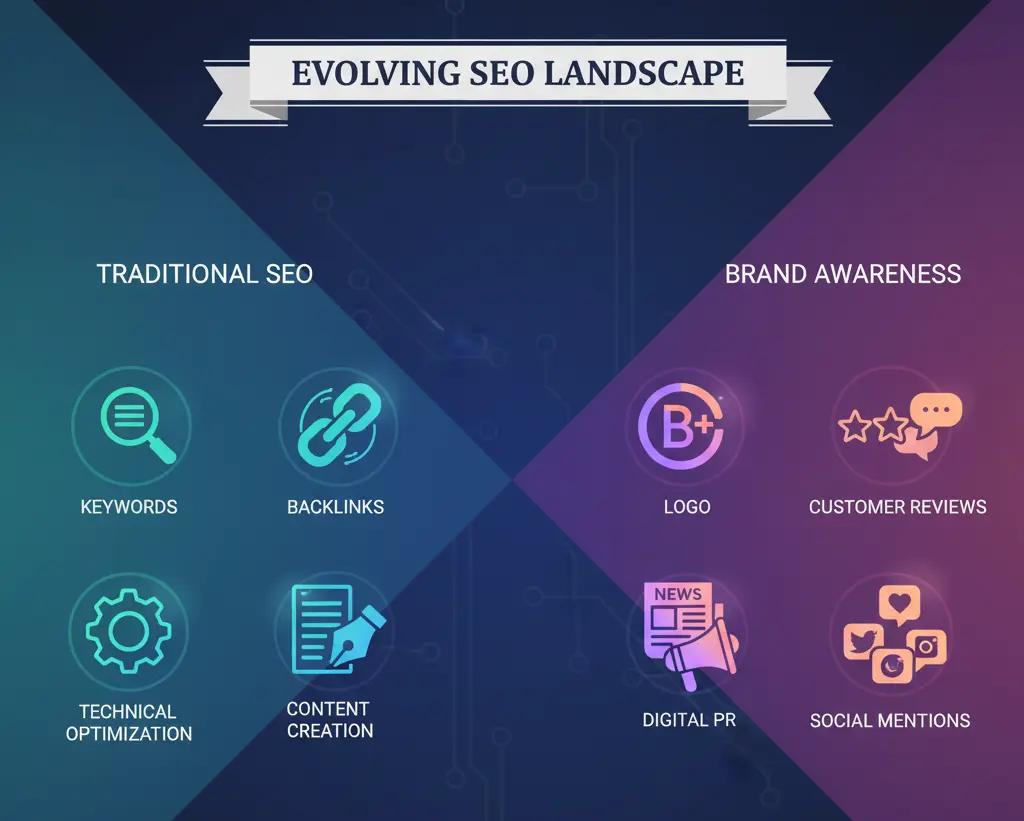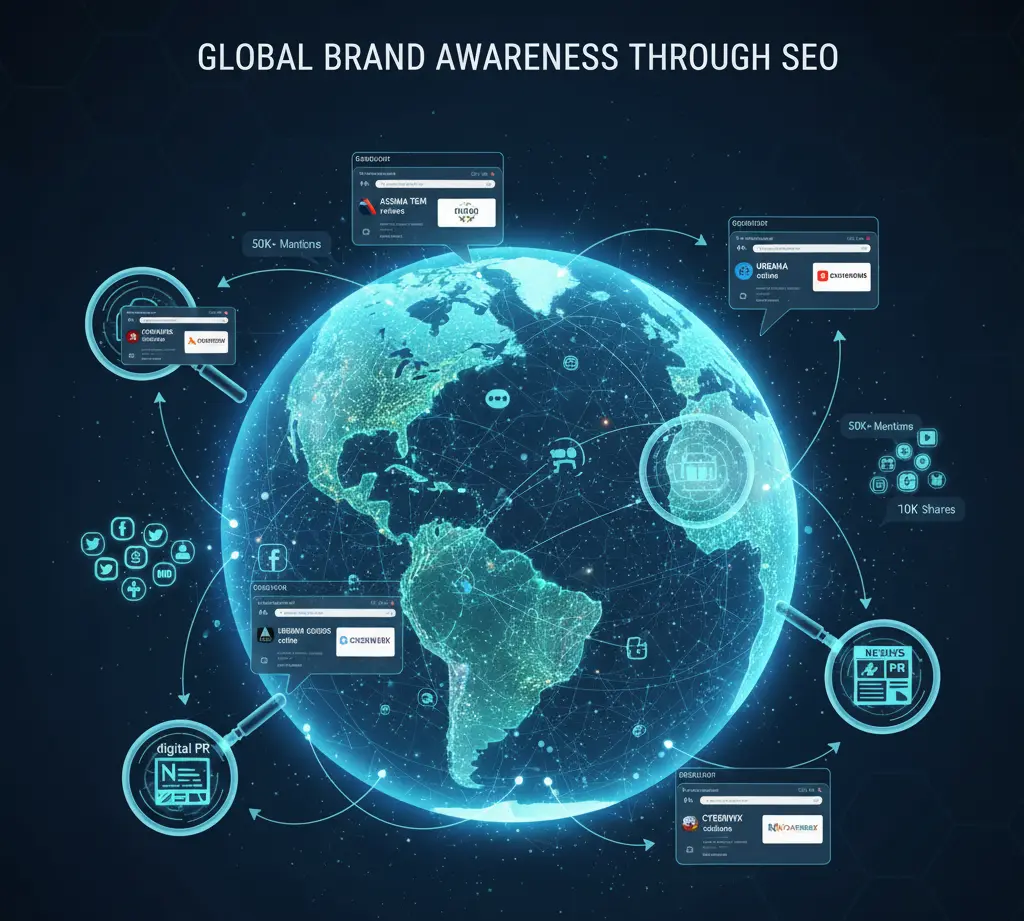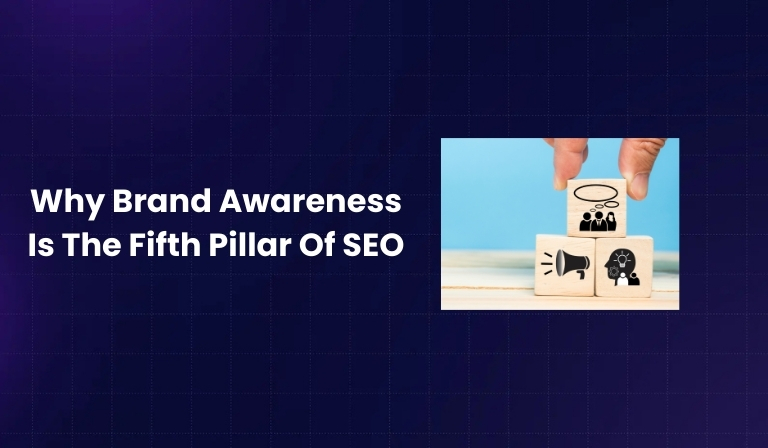The digital marketing landscape has evolved dramatically, yet most SEO strategies are still built on outdated foundations. While 87% of businesses focus exclusively on traditional SEO pillars, they’re missing the secret weapon that could double their organic traffic: brand awareness. This comprehensive guide reveals why brand awareness deserves recognition as the fifth pillar of SEO and provides a complete framework for implementation in 2025.
Understanding the Traditional 4 Pillars of SEO
Before exploring the revolutionary fifth pillar, it’s essential to understand the foundation that has guided SEO strategies for years.
Pillar 1: Keyword and Content Optimization
Content remains king, and keywords serve as the foundation of search visibility. This pillar focuses on creating valuable, keyword-optimized content that addresses user search intent. However, traditional keyword strategies primarily target non-branded searches, leaving a significant traffic opportunity untapped.
Modern keyword optimization involves understanding search intent, creating topic clusters, and developing comprehensive content that answers user questions thoroughly.
Pillar 2: Technical SEO
Technical excellence forms the backbone of any successful SEO strategy. This pillar encompasses Core Web Vitals, site speed optimization, crawlability, and indexing efficiency. Without solid technical foundations, even the best content struggles to rank effectively.
Key technical elements include mobile responsiveness, SSL certificates, XML sitemaps, and structured data markup that helps search engines understand and index content properly.
Pillar 3: On-Site SEO
On-site optimization helps search engines understand page content through strategic website architecture. This includes internal linking, meta descriptions, title tags, header optimization, and schema markup implementation.
Effective on-site SEO creates clear content hierarchies, improves user navigation, and provides context clues that enhance both user experience and search engine understanding.
Pillar 4: Off-Site SEO
Building authority and trust through external signals remains crucial for ranking success. Off-site SEO focuses on earning high-quality backlinks, building domain authority, and establishing credibility within your industry niche.
Traditional off-site strategies include link building campaigns, guest posting, and relationship building with industry publications and influencers.

Why These 4 Pillars Have Limitations
Despite their importance, the traditional four pillars primarily drive non-branded search traffic. This creates a significant blind spot in most SEO strategies, as they fail to capitalize on branded search opportunities that often convert at higher rates.
The limitation becomes apparent when examining traffic distribution: successful brands typically receive 50-70% of their organic traffic from branded searches, yet most SEO strategies ignore this critical component.
The Critical Difference: Branded vs Non-Branded Searches
Understanding the distinction between branded and non-branded searches is fundamental to implementing effective SEO strategies in 2025.
Understanding Non-Branded Searches
Non-branded searches contain no brand-specific terms and represent users seeking solutions without knowing specific companies. For Apple, terms like “smartphone,” “laptop,” or “tablet” constitute non-branded queries.
These searches typically have higher competition, lower conversion rates, and require significant optimization efforts to achieve meaningful rankings.
Understanding Branded Searches
Branded searches include specific brand names, product names, or company-related terms. Apple’s branded searches include “iPhone,” “MacBook,” “Apple Store,” and variations of the company name.
Branded searches demonstrate higher commercial intent, superior conversion rates, and indicate existing brand awareness among potential customers.
Traffic Distribution Analysis
According to industry analysis, established brands like Apple receive over 50% of their search traffic from branded queries. This traffic converts at significantly higher rates because users already possess brand familiarity and trust.
The compounding effect of brand recognition creates sustainable competitive advantages that purely technical SEO strategies cannot replicate.
Why Brand Awareness Is the 5th Pillar of SEO
Brand awareness deserves recognition as SEO’s fifth pillar because it addresses the fundamental limitation of traditional strategies: driving branded search volume.
The Traffic Formula Connection
Search traffic follows a simple formula: Search Traffic = Keyword Volume × Click-Through Rate. Traditional SEO pillars primarily improve click-through rates by enhancing rankings, but they have minimal impact on keyword search volume for branded terms.
Brand awareness directly increases the search volume for branded keywords, creating a multiplier effect that amplifies overall organic performance.
Limitations of Traditional SEO for Branded Searches
Traditional SEO techniques excel at capturing existing search demand but struggle to create new demand for brand-specific terms. This creates a ceiling effect where traffic growth plateaus despite continued optimization efforts.
The awareness gap in SEO strategies represents millions of missed opportunities for businesses that focus exclusively on non-branded optimization.
The Business Impact
Branded search traffic delivers superior business outcomes through higher conversion rates, increased customer lifetime value, and stronger market positioning. Companies that successfully integrate brand awareness into their SEO strategies often see 40-60% improvements in overall organic performance.
The Brand Awareness SEO Framework

Implementing brand awareness as the fifth pillar requires a systematic approach that integrates traditional SEO techniques with strategic brand building initiatives.
Building the Foundation
Brand positioning for search begins with consistent messaging across all digital touchpoints. This includes optimizing branded content, creating compelling brand stories, and ensuring consistent visual identity across platforms.
Successful brand positioning creates memorable associations that encourage future branded searches and improve overall search visibility.
Content Strategy Integration
Thought leadership content establishes industry authority while building brand recognition. This involves creating educational resources, industry insights, and expert commentary that positions the brand as a trusted information source.
Authority building tactics include publishing original research, participating in industry discussions, and consistently delivering valuable insights to target audiences.
Multi-Channel Brand Building
Integrated marketing approaches amplify brand awareness efforts across multiple touchpoints. This includes social media engagement, email marketing, influencer partnerships, and strategic advertising campaigns that work synergistically with SEO efforts.
Cross-channel consistency ensures brand recognition builds efficiently while supporting overall search optimization objectives.
7 Proven Brand Awareness Strategies for SEO Success
Strategy 1: Digital PR and Earned Media
Digital PR represents the most SEO-aligned brand awareness strategy, often called “link building 2.0.” Unlike traditional link building, digital PR prioritizes brand visibility and reach through strategic story placement in relevant publications.
Successful digital PR campaigns create industry buzz, generate high-quality backlinks, and significantly increase brand mention frequency across authoritative websites.
Strategy 2: Influencer Collaboration
Micro-influencer partnerships provide cost-effective brand exposure to highly engaged audiences. Industry thought leader collaborations lend credibility while expanding reach to relevant professional networks.
Co-content creation opportunities multiply brand touchpoints while providing valuable backlink opportunities that support traditional SEO objectives.
Strategy 3: Social Media Brand Building

Platform-specific strategies maximize brand visibility across diverse social channels. Community building tactics create loyal brand advocates who actively search for and recommend brand-related content.
Social proof generation through user-generated content, reviews, and testimonials builds trust while encouraging branded search behavior.
Strategy 4: Content Marketing Excellence
Educational content series establish thought leadership while building brand association with valuable information. Industry research and reports create link-worthy assets that attract media attention and industry recognition.
Visual content strategies including infographics, videos, and interactive tools improve engagement while creating shareable brand assets.
Strategy 5: Strategic Partnerships
Co-marketing opportunities with complementary brands expand audience reach while building industry relationships. Alliance building creates mutual promotional opportunities that benefit all partners.
Cross-promotional campaigns leverage partner audiences to increase brand exposure and generate qualified traffic.
Strategy 6: Customer Advocacy Programs
Review generation strategies create authentic social proof while improving local SEO performance. Case study development showcases successful outcomes while building industry credibility.
User-generated content campaigns encourage customers to create brand-related content, naturally increasing brand mention frequency and search volume.
Strategy 7: Paid Advertising Support
Brand awareness campaigns complement organic SEO efforts by increasing overall brand visibility. Retargeting strategies keep the brand top-of-mind for previous website visitors.
Contextual advertising places brand messages in front of relevant audiences without relying on personal data, making it privacy-friendly and effective for brand building.
Measuring Brand Awareness Impact on SEO
Key Performance Indicators (KPIs)

Branded search volume tracking provides direct measurement of brand awareness impact on search behavior. Tools like Google Search Console reveal branded query trends over time.
Brand mention monitoring across social media, news sites, and industry publications indicates growing brand recognition and potential search impact.
SEO-Specific Metrics
The branded vs non-branded traffic ratio serves as a key indicator of brand awareness effectiveness. Healthy ratios typically show 40-60% branded traffic for established brands.
Click-through rate improvements for branded searches often exceed non-branded CTR by 2-3x, demonstrating the conversion advantage of brand-aware traffic.
Tools and Platforms
Google Search Console provides comprehensive branded search data, while brand monitoring tools like Mention, Brand24, and Ahrefs track brand mention frequency and sentiment.
Social listening platforms reveal brand conversation trends that correlate with branded search volume increases.
ROI Calculation Methods
Attribution modeling helps quantify brand awareness impact on overall conversion performance. Advanced analytics track how brand awareness campaigns influence both direct and indirect conversions.
Lifetime value impact calculations demonstrate the long-term benefits of brand-aware customers compared to purely transactional relationships.
Implementation Roadmap: 90-Day Action Plan
Phase 1 (Days 1-30): Foundation Setting
Brand audit and assessment establishes current brand awareness levels and identifies improvement opportunities. Comprehensive keyword research expands to include branded variations and competitor analysis.
Content strategy development aligns brand messaging with SEO objectives while planning integrated campaigns that support both goals.
Phase 2 (Days 31-60): Strategy Execution
Content creation and distribution begins with thought leadership pieces that establish industry authority. Digital PR campaigns launch with strategic story placement targeting industry publications.
Social media activation increases brand visibility while building communities around brand-related topics and expertise areas.
Phase 3 (Days 61-90): Optimization and Scaling
Performance analysis reveals which strategies generate the highest brand awareness ROI. Strategy refinement focuses resources on the most effective brand building tactics.
Scaling successful initiatives involves increasing investment in proven strategies while testing new approaches for continuous improvement.
Common Mistakes to Avoid
Neglecting brand consistency across platforms undermines brand awareness efforts and confuses potential customers. Focusing exclusively on volume metrics ignores quality indicators that predict long-term success.
Underestimating timeline requirements leads to premature campaign abandonment before results become visible. Brand awareness building requires consistent effort over 3-6 months for meaningful impact.
Siloed marketing approaches prevent synergistic effects between brand awareness and SEO initiatives, reducing overall campaign effectiveness.
Conclusion
The evolution from four to five SEO pillars represents a fundamental shift toward sustainable, long-term search success. Brand awareness as the fifth pillar addresses the critical limitation of traditional SEO: creating demand rather than simply capturing existing demand.
Companies that successfully integrate brand awareness into their SEO strategies achieve superior organic performance through increased branded search volume, higher conversion rates, and stronger competitive positioning. The synergistic effects of traditional SEO combined with strategic brand building create sustainable advantages that purely technical approaches cannot replicate.
Immediate action steps include conducting a brand awareness audit, expanding keyword research to include branded opportunities, and developing integrated campaigns that support both SEO and brand building objectives. The investment in brand awareness SEO pays dividends through improved organic performance, stronger customer relationships, and long-term competitive advantages that compound over time.
FAQ
1. How long does it take to see results from brand awareness SEO?
Brand awareness SEO typically shows initial results within 3-6 months, with significant impact visible after 6-12 months of consistent effort.
2. What’s the ideal ratio of branded to non-branded traffic?
Established brands typically achieve 40-60% branded traffic, while newer brands may start at 10-20% and grow over time.
3. How do I measure brand awareness impact on SEO?
Track branded search volume, brand mention frequency, direct traffic increases, and branded vs non-branded traffic ratios using Google Search Console and brand monitoring tools.
4. Can small businesses benefit from the 5th pillar approach?
Yes, small businesses can leverage local brand building, customer advocacy programs, and content marketing to build awareness within their target markets.
5. What’s the biggest mistake in brand awareness SEO?
The biggest mistake is treating brand awareness and SEO as separate initiatives rather than integrated strategies that amplify each other.
6. How does brand awareness affect local SEO?
Strong local brand awareness increases “near me” searches, improves local pack rankings, and encourages customer reviews that boost local search visibility.
7. What tools are essential for tracking brand awareness SEO?
Essential tools include Google Search Console for search data, brand monitoring platforms for mention tracking, and social listening tools for conversation analysis.
8. How do I integrate brand awareness with existing SEO strategy?
Start by identifying brand-related keyword opportunities, creating thought leadership content, and developing integrated campaigns that support both branding and ranking objectives.

Passionate about blogging and focused on elevating brand visibility through strategic SEO and digital marketing. Always tuned in to the latest trends, I’m dedicated to maximizing engagement and delivering measurable ROI in the dynamic world of digital marketing. Let’s connect and unlock new opportunities together!

